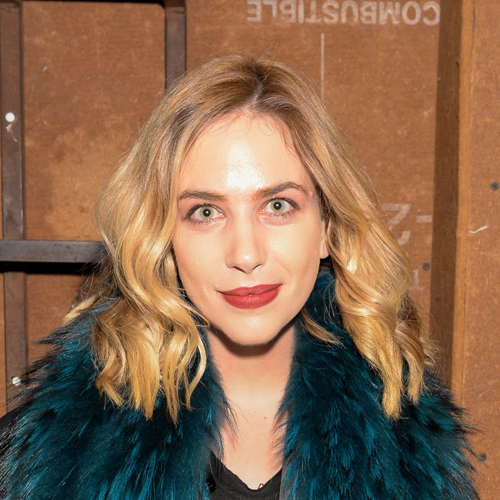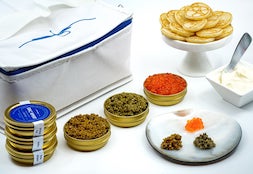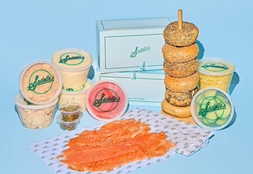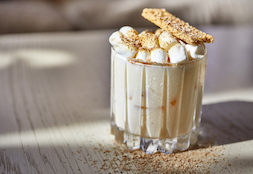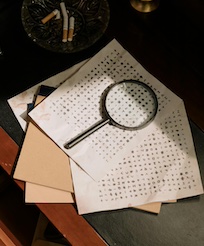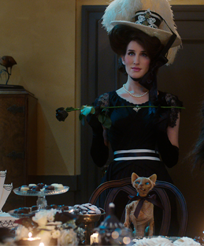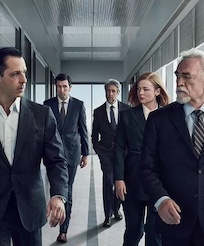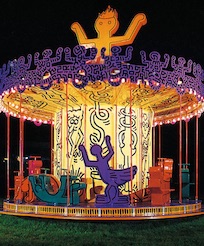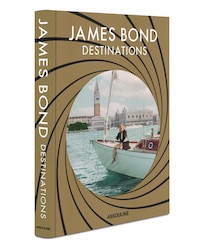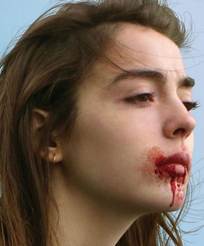Among the many revivals, reboots and spin-offs that have come to define a sizable chunk of this season’s television programming is Queer Eye, Netflix’s updated answer to the Bravo hit originally titled Queer Eye for the Straight Guy, which first aired in 2003 and ended in 2007. Like the original show, it features five gay men—known collectively as the Fab Five—each of whom specializes in an area that straight men are stereotypically clueless about, including culture, fashion, food, interior design and personal grooming. This premise, rebooted for 2018, begs the question: Do straight guys really need a queer eye anymore? Maybe they do, but not for the same reasons they did in the early aughts.
Straight dudes have come a long way, at least sartorially speaking, since 2007. We’re living in an age of perfectly manicured beards maintained by high-end shaving kits, exclusive sneaker launches that sell out in minutes and man buns that rival the tresses of most women in terms of length and softness. My boyfriend, for example, regularly buys $40 styling paste for his hair, and according to a recent study reported on by Esquire, male spending on clothing in the UK is on such a meteoric rise that it’s outperforming all other sectors; the #menswear movement was real (until it wasn't). Even the guys I know who ostensibly couldn’t care less about clothes are still able to navigate their way around a J.Crew well enough to pick out nice-looking sweaters and decently-fitting pants. For most men, it’s no longer acceptable (or even masculine) to be a bumbling slob incapable of picking out a shirt without the help of your mother, wife or girlfriend (or a gay man, for that matter).
Similarly, social media and smartphones have made all of us more aware of once-niche areas like art, design and food. Popular websites like The Infatuation and Tasty mean anyone anywhere can cultivate the discerning palate of a foodie, while all it takes is a quick scroll through Instagram to get the gist of the latest exhibit at MoMA or see street art from Berlin. Sure, not everyone is actively taking advantage of these things—some people just use the internet for porn and memes and leaving ill-informed comments on Facebook—but it’s all so ubiquitous as to make it seem silly that anyone would purport to need a tutor to figure out something like which wine pairs best with salmon or what kinds of haircuts are in style right now. The connoisseur lifestyle, once exclusive to those with the right mix of means, interest and taste, is now accessible to anyone.
So what, then, is Queer Eye—which has received rave reviews pretty much across the board—really about in 2018? It seems like the makeover (or, in Queer Eye-speak “make-better”) aspect of the show is really just a way into a much deeper perspective shift for people who somehow missed the memo that it’s no longer okay to casually discriminate against women and minorities. So far, the men the Fab Five have offered their services to include a Mountain Dew-guzzling self-proclaimed redneck and and a NASCAR-loving, Trump-supporting cop named Cory who receives a much-needed primer from culture expert Karamo Brown on why, exactly, many black people are afraid of the police.
"For me as a black man, the first thing—I could not just say ‘Let’s make you better!’ It was like, cops are killing black people," Brown explains.
“Black Lives Matter, they weren’t able to be heard, and the police officers weren’t able to be heard,” Cory is ultimately able to conclude. "If we could sit down and have a conversation like you and I just did, things would be a lot better in society. Everyone wants to talk but nobody wants to listen." According to People, Brown and Cory formed a genuine friendship while filming the episode and still text regularly.
While the original Queer Eye took place in and around New York City, all of this season’s subjects live in Georgia, most in rural areas. And sure, these dudes are not exactly on top of it when it comes to things like home décor and personal hygiene. One of them resides in a basement with rubber-lined walls. Another, an aspiring stand-up comedian, still lives with his parents and appears to not have changed his bedsheets in months. But the Fab Five’s ability to call these men out for such aesthetic atrocities and suggest suitable alternatives is basically a sideplot. The real point of the show is to challenge the worldview that made realities like a Trump presidency or the silence surrounding Harvey Weinstein’s ongoing abuse possible.
“Right now we need to have a conversation,” decorator Bobby Berk told Variety in an interview prior to the show’s debut. “The second the news comes on TV, people turn it off or tune it out. People don’t want to hear the other side. This show addresses that. We’re in a lot of towns where people have very different views from our own. We get to find a middle ground.”
But Queer Eye goes even deeper than politics in its attempt to weed out toxic masculinity, the socialized, wide-spread psychological condition that many thinkers posit is responsible for social ills ranging from school shootings to rape culture. The Cut reported last year that some men have begun taking classes, like one in Washington, DC called “Rethinking Masculinity,” to un-learn these behaviors and modes of thinking. Queer Eye, in its 2018 form, is something akin to a broadcast version of such a class, Trojan horse-ing wokeness through tips for aesthetic self-improvement.
While you might imagine that the gun-toting, Trump-voting subjects of the show would be resistant to such thinking, somehow they’re not. Perhaps it’s because a reality show is a relatively controlled environment and no one who’s deeply, truly prejudiced (at least against gay people) would sign up to be on a show called Queer Eye. Or perhaps it’s because the 2018 Fab Five are kinder and gentler than their slightly catty forebears. They’re truly charming and funny and difficult not to like. They encourage their to subjects to embrace their own quirks. They engage in real, honest dialogues with them and talk about “unpacking” emotional baggage. They regularly reiterate the importance of allowing oneself to be vulnerable, a comforting message that, even today, is less often extended to men.
In this regard, Queer Eye is an incredible example of what it means to reach out and educate someone else, even when that person has maybe taken actions in the past to bring people like you down. Of course, it should go without saying that it isn’t the job of all gay people (or women or racial and religious minorities) to educate anyone about why their rights are important and worthy of respect; that's a task people need to undertake themselves. But the fact that Netflix decided to pay and support these specific men in doing so—and that they appear to have actually gotten results from both the participants and people watching at home—is an uplifting bright spot amidst all the terribleness of the last year.

